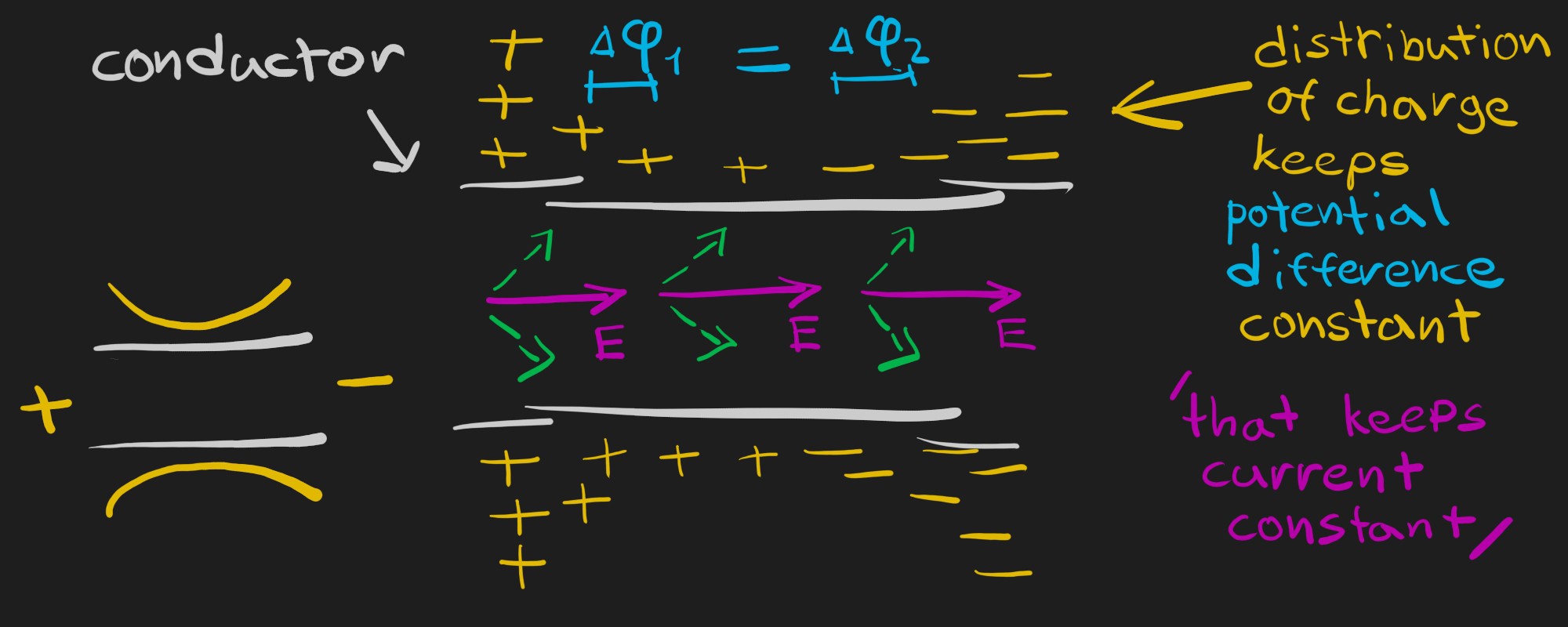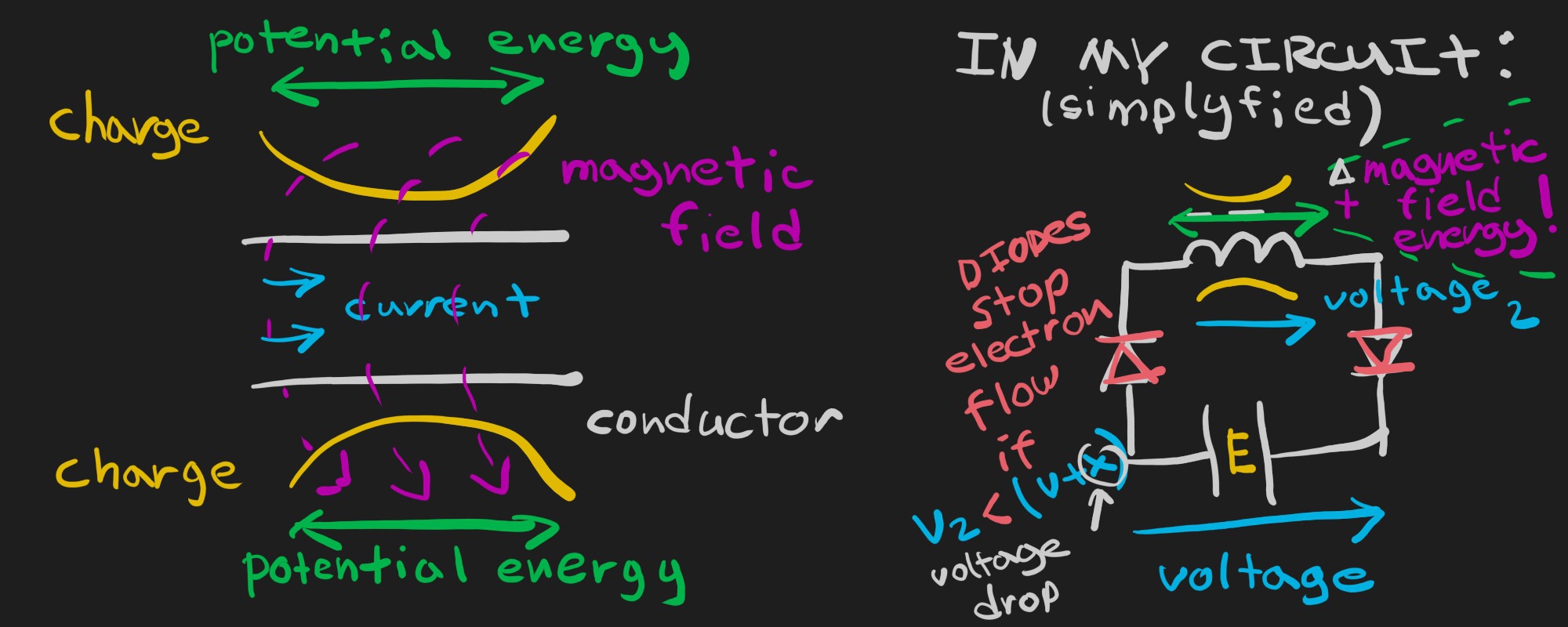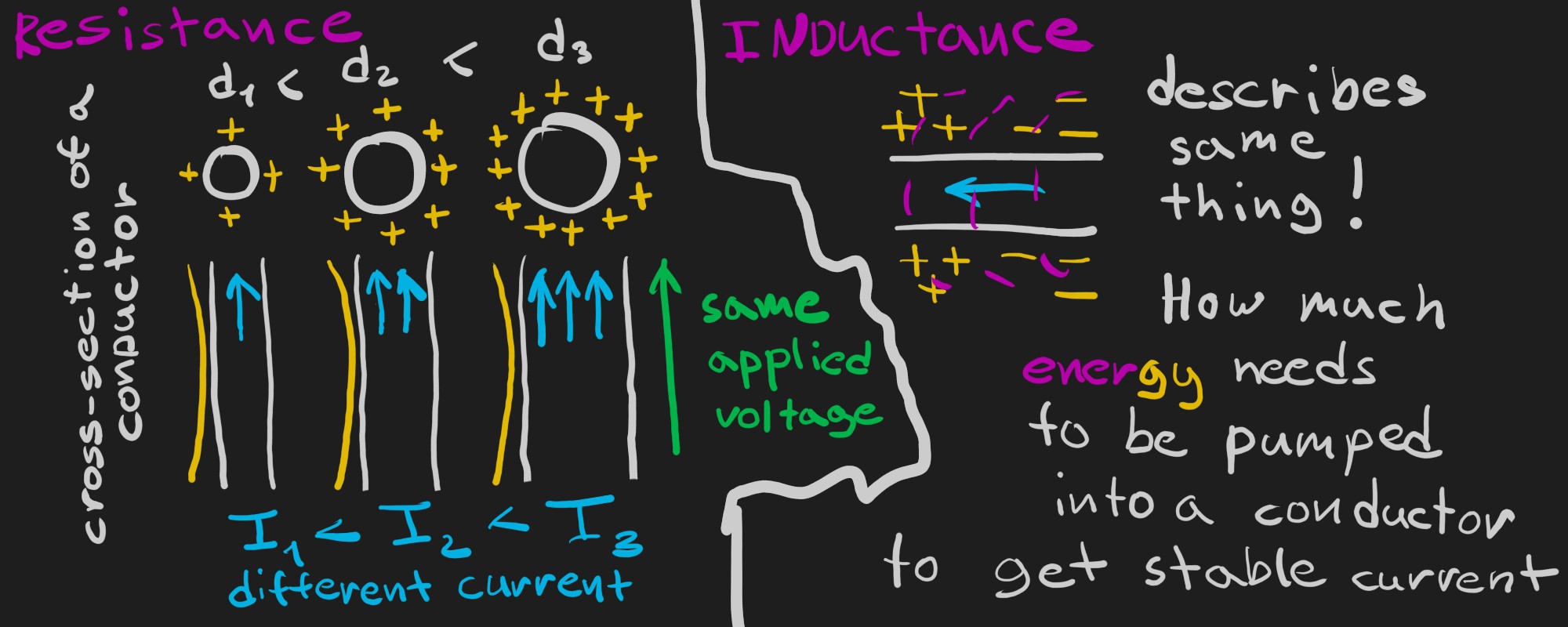This log would be very strange, I wanna introduce new physic theory
Well, I tried to stop myself from doing that kind of work, kept saying "Just use that, don't trash your head with such an outrageous things, you have a lot of another stuff to do" - and here I am!
Now, I want to list, what I don't like in conventional conception of electrical engineering:
- If dissipated power is really U*I (according to Joule's Law), why then it's possible to perform any kind of work? To generate a field, which has energy, you should take that energy from somewhere, as we say that U*I equation is right 100% of time - it should be impossible, however, transformers, oscillatory circuits and electric motors have no problem with it.
- If we say, that coil has an energy of field proportional to flowing current (L*I^2/2), then how on Earth it starts to charge? Traditional chicken & egg question. If we say, that there is no power without a current and no current without an energy...
Needless to say, that traditional laws of physics had no chance to uncover the mystery how my circuit really works even partly. And I was OK with that, until I found efficiency problems in my design and tried to find a reason.
I'm not pretending on universal truth and I have no intention to convince someone, but this theory explains electromagnetic processes much better, in my view, makes a lot of things clearer than ever.
I want to start with a little bit of description, what is the origin of a stable current in the conductor. It's an experimentally proven (but probably not widely-known) fact: distribution of charge on the surface of the conductor.
 And it's fair to say, that as we have potential difference, we have potential energy between charged particles at least. Then I thought about reasons why my circuit is not as effective as needed, it was the first thing which came onto my mind: as I have diodes, it must be a tough work for magnetic field, to power up electric field and break through potential barrier!
And it's fair to say, that as we have potential difference, we have potential energy between charged particles at least. Then I thought about reasons why my circuit is not as effective as needed, it was the first thing which came onto my mind: as I have diodes, it must be a tough work for magnetic field, to power up electric field and break through potential barrier!
 Idea of two energies on the surface of a conductor was very catchy and since that time I started thinking about it, as it seemed, that that charge is responsible not only for current, but for magnetic field, inductance and... resistance! Typically, we say, that we have two types of resistance: resistance and electrical reactance, probably it's an artificial division, caused by urge of numerical description and lack of understanding. That was OK for a typical AC applications, but not enough now, then we are talking about behaviour of an electromagnetic field. Let's have a look:
Idea of two energies on the surface of a conductor was very catchy and since that time I started thinking about it, as it seemed, that that charge is responsible not only for current, but for magnetic field, inductance and... resistance! Typically, we say, that we have two types of resistance: resistance and electrical reactance, probably it's an artificial division, caused by urge of numerical description and lack of understanding. That was OK for a typical AC applications, but not enough now, then we are talking about behaviour of an electromagnetic field. Let's have a look:
 I wouldn't comment that a lot, as imagination is more important here. With same applied voltage, conductor with bigger section area have greater electric flux, and current raises proportional to R^2. On the other hand, electrical resistivity defines surface density of charge for a specific applied voltage, not a conventional "friction"
I wouldn't comment that a lot, as imagination is more important here. With same applied voltage, conductor with bigger section area have greater electric flux, and current raises proportional to R^2. On the other hand, electrical resistivity defines surface density of charge for a specific applied voltage, not a conventional "friction"
So every conductor has that properties. Difference is only how much "inductance" and "resistance" it has. Important to say, that potential energy between charged particle and energy of magnetic field are tied together. There is no magnetic-field energy without proper electric-field energy and vice versa! For example: then you wrap wire around a steel rode, you add an object, which your wire needs to magnetize - it's harder now to cover a conductor with electrons and generate current, each potential difference there "costs" a part of magnetization process.
Funny enough - there is even an interesting relation between temperature and energy, which you need to pump in. For some reason, potential energy between charges decreases with lower temperatures and conductor can gain more electrons proportional to that. I found that, then efficiency of my circuit increased as I put electromagnet in fridge. I think, same process takes place in superconductors (more pronounced) and in batteries at cold - amount of charge stays the same, energy decreases, there is no chemical explanation for now, as I know, so I can give it a try :)
Well then, that about power? There that energies take Joules?
I questioned myself a lot about power dissipated in form on heat. And what if.... Dissipated power is an echo of power, which charged our electromagnetic fields initially? Proportional to applied voltage? Dependent from resistance?
And it's likely, that this power is not only an echo, it slowly transits from charging the fields to dissipating heat, but summary remains constant! Potential difference grows, while conductor is being charged. That's why, if you had initially Up (voltage of a power supply) about 10V and Uc (voltage on a conductor) about 0V, in the end you have no charging going on.
Power distributes like this:
- (Up - Uc)/Up part goes into energy of fields
- remaining part just dissipates in form of heat
- then Up = Uc, all power is being dissipated in form of heat
All that leads us to ridiculously clear understanding of a process and even more ridiculous simulation with simplest math:
 Most amazing, that you can weight roughly how a lot of things work with understanding of that.
Most amazing, that you can weight roughly how a lot of things work with understanding of that.You can predict efficiency of electromagnetic devices
You can design them in the most efficient way easily
And that I like the most - my circuit is not a black box for me now ; )
At the end I want to give some examples, how to work with it:
1) We have a transformer, how to use it efficiently? Let's see, at first - it's a simple coil with a core. Obviously, as only (Up-Uc)/Up part goes into energy of a magnetic field, we would want to keep Uc as distant from Up as we can.
If our line is 220V 50Hz and our target current is 5A, it would be logical to make a 4 Ohms primary coil with proper inductance to let the current rise up to 5A, but to keep it away from 78A current maximum. Using graph on the right side, we can predict efficiency around 95%. 5/78*100 = 6.4, then look for intersection:

2) Same thing goes to electric motors - we don't want them to reach their maximum current capacity, that's why we would try to choose coil uptimes according to that. And that is the reason, why on low RPM (for which they are not designed) they heat so much, especially stalled, then efficiency is 0%
Hope, it was interesting to read , )
 CapitanVeshdoki
CapitanVeshdoki
Discussions
Become a Hackaday.io Member
Create an account to leave a comment. Already have an account? Log In.